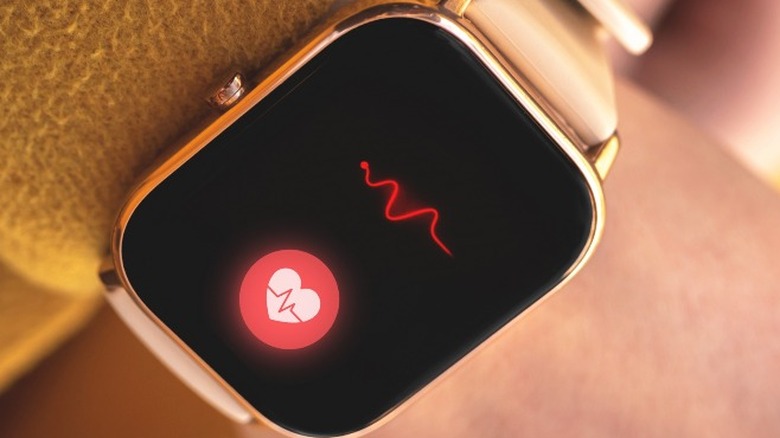Could Temporary Tattoos Be A New Way To Monitor Blood Pressure?
A blood pressure reading indicates how much force your heart is using to pump blood throughout the arteries (via Cleveland Clinic). It's important to have one's blood pressure checked on a regular basis, as high blood pressure can increase our risk of heart attack, heart failure, stroke, and kidney disease, reports the Better Health Channel. However, getting a well-rounded picture of one's blood pressure health can be difficult, as blood pressure readings change in response to exercise, breathing, body positioning, emotional state, and sleep.
"Blood pressure is an important metric," Roozbeh Jafari, a professor of biomedical engineering at Texas A&M, told The Daily Beast. "It gives us a holistic view of the entire cardiovascular system. But if you want to measure it, just one or a few measurements a day isn't enough, and cuff-based solutions are inconvenient, uncomfortable, and impractical." As the co-author of a new study published in Nature Nanotechnology, Jafari and the research team have developed a prototype of a blood pressure monitoring device. It can adhere to the skin's surface for hours at a time in the form of a temporary electronic wrist tattoo.
E-tattoos versus smartwatches
What makes the e-tattoo device both simultaneously lightweight and durable is the fact that it's made up of graphene — a compound similar to the graphite found in wooden pencils (via UT News). By encasing a sensor in thin layers of graphene, the e-tattoo becomes nearly imperceptible to the user. "The sensor for the tattoo is weightless and unobtrusive. You place it there. You don't even see it, and it doesn't move," co-author Roozbeh Jafari stated per the UT News release.
By issuing small electric currents into the skin, the device is able to gauge the body's response, which is then interpreted into blood pressure readings through machine learning technology developed by the research team (per UT News). With accuracy levels that "exceed nearly all available options on the market today," the e-tattoo technology bypasses some of the obstacles associated with smartwatch health monitoring. For instance, e-tattoos can remain firmly in place rather than moving around on the skin's surface. Additionally, smartwatches often collect heart rate data by assessing the degree of LED light penetrating the skin, which can result in inaccurate readings for those with darker skin tones or larger wrists.
While the research is promising, the technology is still in need of further development. Currently, the study team believes these devices could be readily available within five years' time. They have their sights set on linking up the technology with personal Bluetooth devices (via WebMD).


